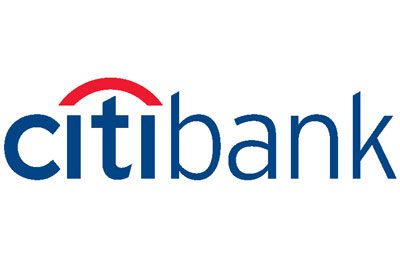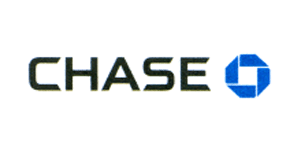Citigroup opened its first office in India in Kolkata (Calcutta) in 1902. With capital nearing US$ 1 billion it is the single largest foreign direct investor in the financial services industry in India. It has become one of India’s most diverse and recognized financial service providers operating through 40 branches of Citibank N.A. across 20 cities and through various finance companies operating directly/indirectly out of locations across the country. Citigroup India offers a complete range of corporate and investment banking services under the “Citigroup” brand name, consumer banking products and services under the “Citibank” banner and consumer finance under the “CitiFinancial” banner. Citigroup has a customer base of over 900 large corporate, over 22,000 small and medium enterprises and over 3,500,000 retail customers. The global corporate and investment banking group provides a range of financial services including treasury management, transaction services including cash management and trade services, securities custodianship, foreign Continue reading
Management Case Studies
Management case studies are real-life examples of issues and problems found in particular workplaces or business organisations. Case study assignments give the opportunity to relate theoretical concepts to practical situations. Most case studies are written in such a way that the reader takes the place of the manager whose responsibility is to make decisions to help solve the problem. In almost all case studies, a decision must be made, although that decision might be to leave the situation as it is and do nothing.
Case Study: The Daewoo Group and the Asian Financial Crisis
In 1999, Daewoo Group Korea’s second largest chaebol, or family-owned conglomerate, collapse under $57 billion in debt and was forced to split into independent companies. The Asian financial crisis and its aftermath finally took its toll on the expansion-minded Daewoo and forced both Daewoo and the Korean government to decide how to dissolve the chaebol. Kim Woo-Choong started Daewoo in 1967 as a small textile company with only five employees and $10,000 in capital. In just 30 years, Mr. Kim had grown Daewoo into a diversified company with 250,000 employees worldwide as well as over 30 domestic companies and 300 overseas subsidiaries that generated sales of more than $100 billion annually. However, some estimated that Daewoo and its subcontractors employed 2.5 million people in Korea. Although Daewoo started in textiles, it quickly moved into other fields, first heavy and chemical industries in the 1970s, and then technology intensive industries in Continue reading
Case Study: Business Model of Napster
The Napster brand has had a varied history. Its initial incarnation was as the first widely used service for ‘free’ peer-to-peer (P2P) music sharing. The record companies mounted a legal challenge to Napster due to lost revenues on music sales which eventually forced it to close. But the Napster brand was purchased and its second incarnation offers a legal music download service in direct competition with Apple’s iTunes. The original Napster Napster was initially created between 1998 and 1999 by a 19 year old called Shawn Fanning while he attended Boston’s Northeastern University. He wrote the programme initially as a way of solving a problem for a friend who wanted to find music downloads more easily online online. The name Napster came from Fanning’s nickname. The system was known as Peer to Peer since it enabled music tracks stored on other Internet users hard disks in MP3 format to be Continue reading
Case Study of J.P. Morgan Chase : The Credit Card Segment of the Financial Services Industry
As result of mergers and acquisitions activities Chase Credit Card Services (CCS) became fifth largest credit card issuer in the industry. Being a child of a highly reputable J.P. Morgan Chase bank the CCS has many competencies and competitive advantages in order to compete in already saturated credit card market. Evolvement of internet and technology, globalization, legislation and modernization of financial industry is giving new opportunities for expansion of the credit card business. Despite of intense competition among the banks to acquire and retain profitable customers this market still has a great potential for the right players. CCS reached a critical point when it is equipped with the right instruments and now needs to demonstrate that it is able to leverage them the most optimal way to maximize its profit and prove to its parent investment banking company that it still deserves to be a part of Chase core business. Continue reading
Case Study of Procter & Gamble: Marketing of Scope Mouthwash
Scope was introduced in 1967 by Procter & Gamble, is a green mint tasting mouthwash, and was positions as a great tasting mouth refreshing brand that provided bad breath protection. Scope held 32% share of the Canadian market for 1990. In 1970 Scope became the market leader in Canada, with many competitors, such as Listerine mouthwash that was launched by Warner Lambert in 1977 and it was a direct competitor to Scope, it had nearly the same characteristics as Scope with a 12% of the market share during that time. But the major competitor for Scope was Plax, a brand by Pfizer Inc, which was launched in Canada in 1988 on a platform quite different from the traditional mouthwashes, and gained a 10% share since launched. Plax detergents were supposed to help loosen plaque to make brushing effective. Before the entry of Plax, brands in the mouth wash market were Continue reading
Case Study: L’Oreal’s Customer- Based Brand Equity (CBBE) Model
Customer-Based Brand Equity is defined as the differential effect that brand knowledge has on consumer response to the marketing of that brand. The Customer-Based Brand Equity Model approaches brand equity from the perspective of the consumer — whether this be an individual or an organization. Understanding the needs and wants of consumers and organizations and devising products and campaigns to satisfy them are at the heart of successful marketing. BRAND SALIENCE: Created in France, L’Oreal Paris brings the sophistication and elegance derived from its French heritage to women and men all over the world. L’Oreal Paris offers leading-edge products that out-perform the competition to people who care more about the way they look. Our passion for innovation, performance, style and a sense of premium is encapsulated in the ‘because you’re worth it’ philosophy. Our core values are supported by our strong investment in scientific research and technology. Over a third Continue reading



